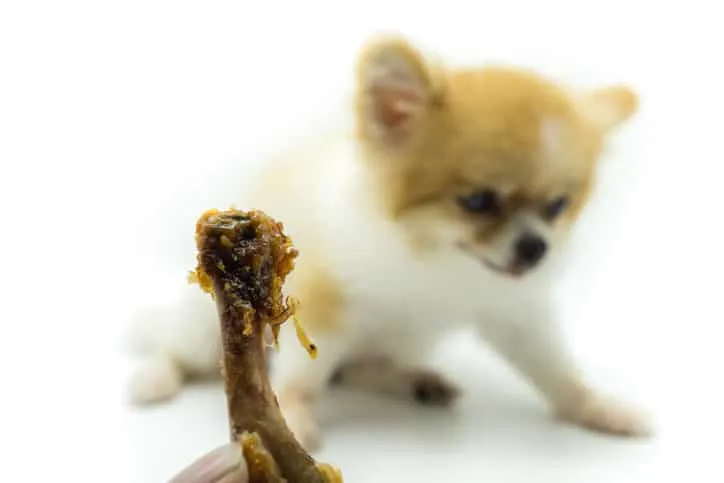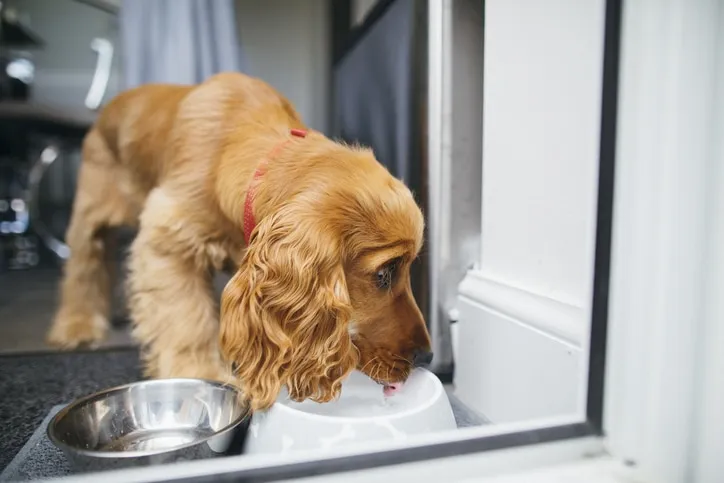Discovering that your dog ate a chicken bone can be alarming for any pet owner. These bones are dangerous because they can splinter easily, leading to choking, internal injuries, or blockages in the digestive tract. If your furry friend has just consumed one, staying calm is crucial while you take immediate action to protect their health. This guide outlines the essential dos and don’ts, drawing from veterinary expertise to help you respond effectively.
For a comprehensive overview of harmful foods, check out this list of what dogs can t have.
Command Your Dog to Drop It Immediately
The first step if you catch your dog in the act is to issue a firm “drop it” or “leave it” command. Well-trained dogs often respond quickly, spitting out the bone before swallowing. If they comply, inspect their mouth closely for any fragments and dispose of the bone securely. Praise your dog afterward to reinforce the behavior, preventing future incidents.
This quick intervention can avert disaster, as even small splinters pose risks.
 Dog attempting to eat a chicken bone in a home setting
Dog attempting to eat a chicken bone in a home setting
Never Induce Vomiting at Home
Resist the urge to make your dog vomit, as this could cause the bone to lodge in their throat or esophagus, worsening the situation. Chicken bones are brittle and may fracture further during retching. Instead, contact your veterinarian right away for professional guidance tailored to your dog’s size, breed, and condition.
Veterinarians emphasize that home remedies like hydrogen peroxide can lead to complications, according to guidelines from the American Veterinary Medical Association (AVMA).
Safely Remove the Bone from Their Mouth
If the bone is still in your dog’s mouth, gently pry their jaws open—press lightly under the jaw to relax it—and extract the piece carefully. Remove any visible shards from their gums or teeth to prevent swallowing. Avoid forceful yanking, which could cause panic, biting, or bone splintering. Smaller breeds face higher risks due to their narrower throats.
Patience here is key; a calm approach minimizes stress for both you and your pet.
Avoid Cotton Balls or Similar Myths
Ignore outdated advice about feeding cotton balls soaked in milk or oil. These can create blockages in the intestines or throat, compounding the problem. No home remedy replaces professional vet care—stick to evidence-based steps.
Check for Choking Signs Right Away
Observe your dog closely for choking: labored breathing, pawing at the mouth, blue gums, or collapse. Cooked chicken bones are hollow and prone to splintering during chewing, while swallowed whole, they might pass through in larger dogs. However, small dogs or puppies are more susceptible to obstructions. Perform basic pet first aid like the Heimlich maneuver only if trained, but prioritize calling emergency services.
For visual references on unsafe foods, see this what not to feed your dog chart.
 Close-up of a dog with a chicken bone
Close-up of a dog with a chicken bone
Contact Your Veterinarian Without Delay
Phone your vet immediately, even if your dog seems fine. Describe the incident: bone size, amount eaten, your dog’s breed, weight, and symptoms. They may recommend monitoring, an X-ray, or endoscopy. Studies, such as one in the Journal of Veterinary Emergency and Critical Care (NCBI PMC8965252), highlight that timely intervention prevents perforations or infections.
In many cases, vets opt for observation if no distress is evident, but diagnostics ensure safety.
Offer Bread and Water to Cushion the Passage
If no choking occurs and your vet approves, provide a few slices of plain white bread and fresh water. The bread softens and wraps around fragments, protecting the esophagus and stomach lining. Bone broth can stimulate digestion, aiding breakdown. This isn’t a cure but a supportive measure while awaiting professional advice.
Always confirm with your vet first, as individual health factors vary.
Monitor Closely for 24-48 Hours
Vigilance post-incident is vital. Watch for warning signs like lethargy, abdominal bloating, vomiting (especially with blood), diarrhea, loss of appetite, straining to defecate, or pain indicators such as whining. Track stool for bone pieces or blood. Larger dogs may process fragments better, but any change warrants an urgent vet visit.
Your intimate knowledge of your dog’s baseline behavior is invaluable here.
Related reading: Explore what can dogs eat and what can they not eat for prevention tips.
For digestive issues that might arise, learn about what can dogs eat for an upset stomach.
Prevention Tips for a Safer Home
Keep counters clear, secure trash bins, and never give cooked bones—raw ones might be safer under supervision per some vets, but consult first. Train with commands and use puzzle toys to curb scavenging. Regular vet check-ups catch predispositions early.
Conclusion
If your dog ate a chicken bone, prompt action—from commanding drop it to vet consultation—can safeguard their life. While some cases resolve without issue, risks like blockages or perforations demand caution. Prioritize professional care and monitor diligently.
Consult your veterinarian for personalized advice, and share your experiences in the comments below. Stay proactive to keep your dog healthy and happy!
References
- American Veterinary Medical Association (AVMA): Guidelines on foreign body ingestion in dogs.
- National Center for Biotechnology Information: PMC8965252 on gastrointestinal foreign bodies in pets.
